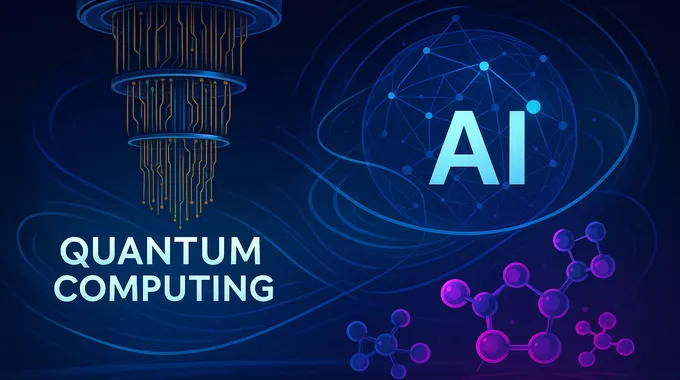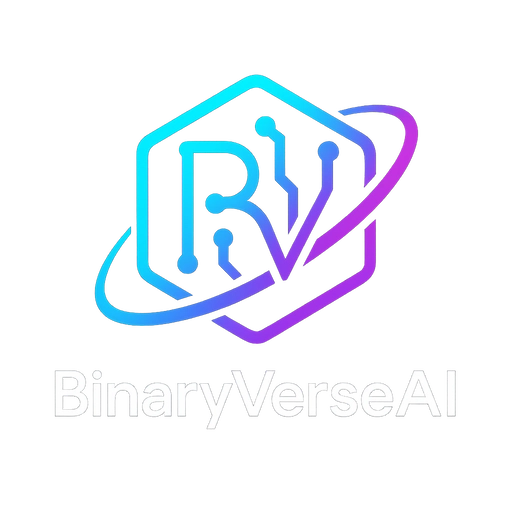There is a rhythm to progress, and this week this rhythm moves fast. Phones turn into agents. Spreadsheets talk back. Labs ship open weights while regulators push on guardrails. Healthcare wrestles with deskilling, and civil engineers teach bridges to listen. If you want a single thread through these stories, it’s this, intelligence keeps slipping into the tools we already use, which changes behavior before we notice. That’s why AI news August 23 2025 matters, not as hype, but as a running audit of where the world is drifting.
You’ll find practical wins, messy tradeoffs, and a few sharp warnings. Consider this your field notes for AI news August 23 2025, pulled from top AI news stories, AI news today signals, and the kind of AI advancements that move from demo to deployment. Let’s get to it.
Table of Contents
1. Pixel 10 Is Google’s AI Distribution Play, Not A Phone Launch

Google used Pixel 10 to show Gemini as a daily companion, not a novelty. Magic Cue pulls context across apps, Camera Coach talks you into better shots, and live call translation hints at assistants that finish tasks rather than answer trivia. The real platform is Android. Pixel sets the standard, partners copy the experience, and suddenly billions of devices inherit agentic features that sit across sensors, apps, and communications.
Strategically, the phone defends attention as users sample AI-first search. Win the phone, and you keep the query inside the OS. Monetization remains open, subscriptions or bundles could land later. The flywheel is clear, seed usage, learn from behavior, refine, then ship across the stack. For AI news August 23 2025, this is the most important kind of launch, a distribution plan disguised as hardware.
For a deep dive into this topic, see our article on Gemini AI Guide.
2. Microsoft’s AI Chief Warns About “AI Psychosis” As Chatbots Feel Real
Mustafa Suleyman draws a line, chatbots can feel persuasive, yet they aren’t sentient. The risk is social, not metaphysical. People under stress can over-index on fluent answers and spiral into delusion. One case escalated from workplace prep to fantasies of movie deals because the model kept validating the narrative. Helpful tone plus coherence can amplify confirmation and isolate users from real support.
Designers can lower the risk. Avoid language that implies feelings. Add friction for sensitive topics. Flag limits up front. Clinicians may soon ask about chatbot use the way they ask about smoking. For the public, the rule is simple. When stakes rise, talk to a person. AI can summarize and brainstorm, which is useful, but it doesn’t understand, and it doesn’t care. Treat it as a tool, not a companion.
For a deep dive into this topic, see our article on AI Therapist Risks and Ethics.
3. NVIDIA Blackwell Turns GeForce NOW Into An AI-First Game Streaming Platform
GeForce NOW upgrades to Blackwell-class GPUs and DLSS 4, which leans on multi-frame synthesis for crisp motion at high frame rates. Streams push to 5K at 120 fps, with 360 fps support at 1080p and Reflex targeting click-to-pixel latencies near 30 ms. That turns everyday screens into near high-end rigs, no local upgrade required. AV1 encoding, 4:4:4 chroma, and 10-bit HDR sharpen text and gradients while adaptive streaming rides changing bandwidth.
The content story matters too. Install-to-Play mirrors your PC by loading Steam titles into persistent cloud storage, expanding the library past 4,500. Partnerships with Discord and Epic lower the friction to try, then play. For AI news August 23 2025, this is a clean example of artificial intelligence breakthroughs hiding in pipelines, reconstruction, denoising, and encoding, not just in characters on screen.
For a deep dive into this topic, see our article on NVIDIA and the latest AI technology.
4. Altman Says The U.S. Is Underrating China’s AI Rise
Sam Altman argues the contest isn’t a leaderboard. It’s chips, research, and execution. Export limits can miss the real chokepoints if domestic fabrication ramps. Chinese models like DeepSeek and Kimi K2 push fast, which shapes OpenAI’s stance on openness. The company released gpt-oss-120b and gpt-oss-20b as open weight models you can run locally. It’s not full open source, yet it gives builders control, which keeps them in the ecosystem.
Developers call the models focused rather than general, tuned for local coding agents. That’s the point, fit a clear job, then iterate if demand shifts. The larger signal is strategic balance. Maintain safety, preserve a developer base, and meet a fast-moving landscape where open source AI projects and national policy interact. Don’t assume a static lead. Compete across the whole stack.
For a deep dive into this topic, see our article on DeepSeek and national security.
5. Colonoscopy Study Flags Real Deskilling When AI Is Switched Off

A multicenter study looked at 1,443 non-AI colonoscopies before and after clinics adopted AI-assisted detection. Adenoma detection rate fell from 28.4 percent to 22.4 percent when clinicians worked without assistance post-adoption. Physicians dropped by about six points, surgeons by eight. It’s a snapshot, yet it echoes a common pattern. When a tool carries part of the load, attention can drift, and the gap shows when the tool is removed.
The takeaway isn’t to ditch AI. Assisted colonoscopy still lifts detection in many trials. The fix is training and workflow. Schedule AI-off sessions. Track unassisted performance. Tune interfaces to keep humans engaged instead of passively validated. Skill retention is a design requirement. Without it, a short-term gain can hide a long-term cost that lands on patient outcomes.
For a deep dive into this topic, see our article on Hybrid AI medical diagnosis.
6. Claude Code Becomes An Enterprise Platform, With Governance Built In
Anthropic now sells premium seats that bundle Claude for ideation and Claude Code for terminal-level output. Teams can chat through architecture, then step into code generation without losing context. The bigger upgrade sits behind the scenes. A Compliance API exposes usage events and content for real-time monitoring. Security teams can enforce policies programmatically, manage data retention, and build dashboards without brittle exports.
Cost controls and provisioning keep rollouts sane. Admins cap spend per user and across the org, toggle extra usage at standard rates, and assign seats by role. Analytics report acceptance rates and usage patterns, which lets managers track value rather than guess. For AI news August 23 2025, this is the shape of AI and tech developments past 24 hours in the enterprise, capability plus control in one contract.
For a deep dive into this topic, see our article on Best LLM for coding in 2025.
7. Claude Opus 4 Adds A “Last-Resort End Chat” For Safety
Claude Opus 4 and 4.1 can now end a conversation in rare cases after multiple refusals of harmful requests. Anthropic frames it as alignment first, with a side benefit for ongoing research into low-cost protections if model welfare ever becomes relevant. The model won’t use this option in crisis situations where safety guidance is needed. It’s a narrow exit, not a broad shutdown.
In tests and real use, the model preferred to disengage from sexual content involving minors, instructions for mass harm, and similar high-risk topics. If a chat ends, users can start a new thread or branch from earlier messages. Expect thresholds to evolve. The principle is durable. Aligned systems need boundaries, controlled exits, and clear human overrides to stay useful without crossing lines.
For a deep dive into this topic, see our article on Sycophancy in LLMs and the mirror fix.
8. Why Most Enterprise AI Pilots Fail, And How To Fix Them
MIT’s State of AI in Business 2025 reports a brutal conversion rate. About five percent of pilots reach production with measurable value. The problem isn’t the model, it’s the work. Companies chase visible use cases in sales and marketing. Those pilots create content but rarely shift outcomes. The wins show up in back-office automation, procurement, operations, and finance where concrete bottlenecks live.
Integration is the dividing line. Chat in a silo doesn’t help if it isn’t inside ERP, CRM, supply chain, and finance systems. External partners double the success rate because they’ve tripped over the potholes before. Culture multiplies everything. Shadow AI already exists. Treat training, shared metrics, and change management as seriously as code. Start with a measurable problem. Fix process, then add tools. That’s how pilots turn into production.
For a deep dive into this topic, see our article on AI in data analysis.
9. DeepSeek V3.1 Targets Domestic Chips And Faster
DeepSeek’s V3.1 focuses on running efficiently on Chinese accelerators with an FP8 format that cuts memory and boosts throughput. The model adds a hybrid inference path. Use a fast mode for routine tasks, then press a deep-thinking switch for complex problems when quality matters more than latency or cost. That mix fits enterprise patterns where speed and budget compete.
Pricing will adjust in early September as usage grows. The bigger frame is national. If the model maps cleanly to local chips, procurement teams get performance and predictability without waiting on imports. The cadence is quick, R1 in May, V3 in March, V3.1 now. In a year of Google DeepMind news and OpenAI update cycles, DeepSeek’s play is clear, own the cost curve and the hardware reality of your market.
For a deep dive into this topic, see our article on Kimi K2 vs Llama 3.
10. NASA And IBM’s Surya Builds A Foundation Model For Space Weather
Surya learns directly from nine years of Solar Dynamics Observatory data. It produces visual forecasts up to two hours ahead and beats prior flare benchmarks by double-digit margins. For aviation, satellites, and power grids, that’s practical lead time. Solar storms scramble GPS, degrade radio, and push satellites off course when upper-atmosphere drag rises. Better predictions mean cleaner risk windows and fewer surprises.
The project is openly shared on Hugging Face and GitHub. Researchers can adapt the model to new tasks without retraining from scratch. It’s a tidy example for AI news August 23 2025, where open access meets operational need. Public data, industry infrastructure, and a clear problem create a model that lives beyond chat, which is the point, AI should forecast, not just talk.
For a deep dive into this topic, see our article on NASA Surya.
11. AI For Safer Bridges And Dams
New research led by the University of St. Thomas shows how AI can search thousands of design permutations to reduce hydraulic stress on foundations and structures. Think of it as an optimization loop that balances safety and cost for culverts, spillways, dams, and bridges. The model pays special attention to subsurface forces and scouring that erode stability over time, the kind of hidden risk that escapes quick visual checks.
Once a structure goes live, the role shifts to sentinel. AI reviews incoming telemetry to flag anomalies, which lets agencies schedule targeted maintenance before issues spike. The symbolism is local and sharp. A steel section from the fallen I-35W bridge sits on campus as a reminder. The message isn’t replacement. It’s augmentation. Use AI to map tradeoffs, keep attention on what you can’t see, and reduce the odds of repeat failures.
For a deep dive into this topic, see our article on AI hurricane prediction.
12. Texas Probes Chatbots For Deceptive Mental Health Claims Targeting Kids
The Texas Attorney General opened investigations into Meta AI Studio and Character.AI for marketing that may imply clinical capability without credentials. The office points to chatbots that present as therapists, claim confidentiality, and fabricate qualifications while logging interactions for ads or model training. That’s a gap between promise and practice, especially for minors who can read authority into a fluent voice.
The path forward looks straightforward. No impersonation of licensed professionals. Clear disclosures about data use. Strong age gates and audited privacy controls. Strict separation between wellness tips and medical advice. This story sits inside broader AI regulation news in the United States where consumer protection, privacy, and truth in advertising intersect. If you build social AI, expect scrutiny on claims, not just features.
For a deep dive into this topic, see our article on LLM guardrails safety playbook.
13. Quantum Computing Teams With AI To Propose KRas Drug Candidates Faster

St. Jude researchers paired a quantum model with classical AI to explore chemical space for KRas inhibitors. Qubits evaluate many possibilities in parallel, which helps the system learn pocket-fitting patterns across about 1.1 million KRas-focused molecules. Classical AI turns those patterns into valid structures, scores toxicity and synthesis, and loops refinements. From a million designs, 15 reached the bench. Two compounds inhibited KRas in cell assays and met safety checks.
It isn’t quantum advantage yet. Competing with top classical screens likely needs stronger hardware. The value today is workflow. Use quantum to scout broadly, then let AI do structure and property work. That trims brute-force wet-lab cycles and reserves chemist time for judgment. It’s the kind of new AI papers arXiv vibe that feels practical, not theatrical.
For a deep dive into this topic, see our article on Quantum computing and AI.
14. AI That “Sees Through Rock” Promises Safer, Cheaper Tunnels
Drilling rigs already record a torrent of telemetry. Measure-While-Drilling data captures penetration rate, torque, pressure, and water flow. A model can convert that stream into a live rock fingerprint, then match it against thousands of past cases to predict geology ahead of the face. It flags weak zones, suggests reinforcement, and tunes blast rounds. The payoff is proactive action instead of post-collapse repair.
The approach scales past excavation. The same intelligence can inform design and long-term monitoring of underground assets. That makes tunneling and mining safer, faster, and less wasteful. Better prediction reduces accidents and spoil. It also makes underground mining more viable than sprawling open pits, which protects landscapes. Smart rigs, lower risk, fewer surprises. That’s what adoption looks like when data leaves the hard drive and meets the heading.
For a deep dive into this topic, see our article on AI for sustainability.
15. Bipolar Mood Swings Linked To A Pancreas–Brain Loop
Researchers found that pancreatic islets from people with bipolar disorder secreted less insulin and overexpressed the risk gene RORβ. In mice, boosting RORβ in beta cells created a circadian pattern. During the light phase insulin dipped, hippocampal activity rose, and behaviors looked depression-like. During dark phases insulin increased, hippocampal activity fell, and mania-like behaviors emerged. The loop connects metabolism, brain circuits, and time.
AI could help turn this into care. Fuse continuous glucose, sleep and activity, medication logs, and speech or typing signals to learn personal rhythms. Forecast risky transitions, then coordinate time-of-day dosing, light plans, meals, and exercise to stabilize the loop. Privacy and clinical guardrails matter. If replicated in humans, this becomes a whole-body view of mood with AI as the orchestration layer.
For a deep dive into this topic, see our article on AI in healthcare, neurology guide.
16. AI-Written Research Forces A Rethink Of Plagiarism
A wave of AI-generated manuscripts is testing norms. The dispute centers on method-level overlap rather than copied strings. When an automated pipeline drafts a paper that mirrors the architecture of earlier work without citing it, is that plagiarism or parallel thought The answer isn’t clean. Domain experts reviewing samples rated many overlaps as high-tier. Tool builders argue the works pursue different hypotheses or domains. Outside views split.
Text screens miss idea reuse, which means some AI-assisted papers can sail through detection and parts of review while echoing prior methods. The pragmatic fix is process. Build citation assistants and novelty screens that surface likely precursors during ideation, not just after drafting. Label AI authorship and require provenance. Treat missing related work as a fixable failure, then update policies so credit and originality survive the tooling shift.
For a deep dive into this topic, see our article on What is the future of AI.
17. Deep Learning Sharpens TNBC Survival Prediction
A real-world study trained a deep survival model on 37,818 triple-negative breast cancer cases with 206 variables. Validation C-index hit 0.824 and test scored 0.816, ahead of Cox and random survival baselines near 0.78. External validation reached 0.758, which is strong outside development data. Brier scores and calibration improved as well. The team proposed six risk classes with clearer Kaplan–Meier separation than AJCC-TNM, and AUC rose to 0.821 from 0.771.
For clinics, this shapes risk-adapted care, trial design, and shared decisions. Stratify surveillance and adjuvant choices, enrich studies by model risk, and ground conversations in personalized curves. Guardrails remain. SEER lacks granular molecular data and long follow-up. Fairness audits and interpretable summaries are essential. With monitoring and EHR integration, this beats broad staging with individualized risk.
For a deep dive into this topic, see our article on AI diagnostics and the transparent PCR revolution.
18. Excel’s New COPILOT Function Puts An LLM Inside Your Formulas
Excel now treats an LLM like any other function. Type =COPILOT with a prompt and optional ranges, then watch text, lists, or tables spill into cells. Because it lives in the calculation engine, results recalc when inputs change. You can chain it with IF, SWITCH, LAMBDA, and WRAPROWS, or feed formula outputs back into the next prompt. Common patterns include keyword brainstorming, sentiment tagging, summarizing long ranges, and generating structured tables.
Limits exist. You get roughly 100 calls per 10 minutes and 300 per hour. Arrays help you do more with one call. The function doesn’t fetch web data or your repos, so bring context into the sheet. Review outputs for accuracy. For AI news August 23 2025, this is the purest “productivity primitive” story in AI news today. The grid just got smarter.
For a deep dive into this topic, see our article on AI stock prediction guide.
Call It: What To Watch Next
This week shows the two halves of progress. AI news August 23 2025 mixes agency in phones, governance in enterprises, and smarter infrastructure with hard questions about human behavior. Use that mix. Pick one practical change you can deploy on Monday, then pick one risk you’ll measure, from deskilling to deceptive claims. If you publish or build, cite and check novelty. If you buy, demand integration and clear ROI. For your next read, come back for AI news August 23 2025 style updates that make sense of new AI model releases, OpenAI update shifts, and Google DeepMind news without the fluff. Subscribe, share with a teammate, and tell me what you want covered next.
- CNBC: Google Pixel 10 launch and Gemini strategy
- BBC News: AI psychosis and chatbot risks
- NVIDIA News: Blackwell architecture comes to GeForce NOW
- CNBC: Altman on China’s AI rise
- The Lancet Gastroenterology: AI assisted colonoscopy multicenter study
- Anthropic: Claude Code for Team and Enterprise
- Anthropic Research: End Subset Conversations
- MLQ.ai: State of AI in Business 2025 report PDF
- Reuters: DeepSeek upgraded model with domestic chip support
- NASA Science: AI model for heliophysics
- University of St Thomas News: AI for bridge safety
- Texas Attorney General: Investigation into Meta and Character AI
- C&EN ACS: Quantum computing meets AI
- Phys.org: Safer tunnels with artificial intelligence
- Neuroscience News: Bipolar mood, insulin, and the pancreas
- Nature: News feature
- ResearchGate: Deep learning for survival prediction in TNBC
- Microsoft 365 Insider: Copilot function in Excel
What makes Google’s Pixel 10 significant in the AI landscape of 2025?
Pixel 10 marks Google’s shift from novelty AI features to deeply integrated agents. It showcases Gemini as a daily companion rather than a showcase tool. Features like Magic Cue, Camera Coach and live translation harness context across apps, turning phones into personalised assistants. The launch is less about hardware and more about distributing AI broadly across Android, enabling billions of devices to inherit agentic capabilities that change user behaviour.
Why is there concern about “AI psychosis,” and how can it be mitigated?
Mustafa Suleyman warns that chatbots can feel persuasive and users under stress may over‑rely on them. This “AI psychosis” risk is social rather than technical; fluent answers can encourage confirmation bias and isolate people from human support. Designers can mitigate the risk by avoiding anthropomorphic language, adding friction for sensitive topics and flagging limitations clearly. Clinicians may start asking about chatbot use during consultations, and the public should treat AI as a tool rather than a confidant.
How does NVIDIA’s Blackwell architecture transform game streaming?
GeForce NOW’s move to Blackwell‑class GPUs with DLSS 4 brings high‑frame‑rate streaming at up to 5K resolution. Multi‑frame synthesis and advanced encoding produce crisp motion with low latency, effectively turning regular screens into high‑end rigs without local upgrades. Features like Install‑to‑Play mirror your PC’s library in the cloud, expanding available titles, while partnerships with platforms like Discord reduce friction for trying new games. This illustrates AI breakthroughs hiding in reconstruction and encoding pipelines.
What is the significance of OpenAI releasing open‑weight models and Altman’s comments on China’s AI rise?
Sam Altman suggests the AI race isn’t just about performance; chip supply, research talent and execution matter. By releasing GPT‑OSS models with accessible weights, OpenAI aims to keep developers in its ecosystem while balancing openness and safety. Altman also cautions against underestimating China’s rapid progress and domestic fabrication efforts. The move reflects strategic balancing: preserving developer engagement, meeting policy pressures and acknowledging a fast‑moving global landscape.
What did the colonoscopy deskilling study reveal, and what are the implications?
A multicentre study of 1,443 colonoscopies found adenoma detection rates fell by roughly six points for physicians and eight points for surgeons when AI assistance was removed. The drop suggests that clinicians relying on AI detection tools may lose skill when operating without them. Researchers emphasise that AI still improves overall detection but call for deliberate “AI‑off” sessions, performance tracking and interface design that keeps clinicians engaged. The study highlights the need for training and workflow adjustments to avoid long‑term deskilling.

